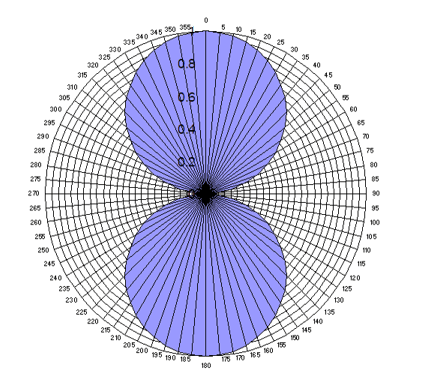

If it were possible to fabricate a perfect velocity microphone with a perfect cosine polar response at all frequencies, it would represent an almost perfect encode system for the capture real acoustic sounds for replay over loudspeakers. Such a microphone would be - in effect - an acoustic sine/cosine pan-control. For more information go here.
Unfortunately, all figure-of-eight microphones tend to "beam" and become more directional with frequency. An example of the polar response of a practical microphone is given here.
The result of this narrowing of the high-frequency response will be to exagerate HF cues with respect to LF cues because - for a given obliquity θt, a greater interchannel ratio will be encoded at HF than at LF.
This will lead to distortion of the HF image which will bias side-response with respect to centre-response. In other words, the distortion will be of the same form as the unwanted head-shadow distortion already noted in standard stereophony.

Address all mail to sales@phaedrus-audio.com
